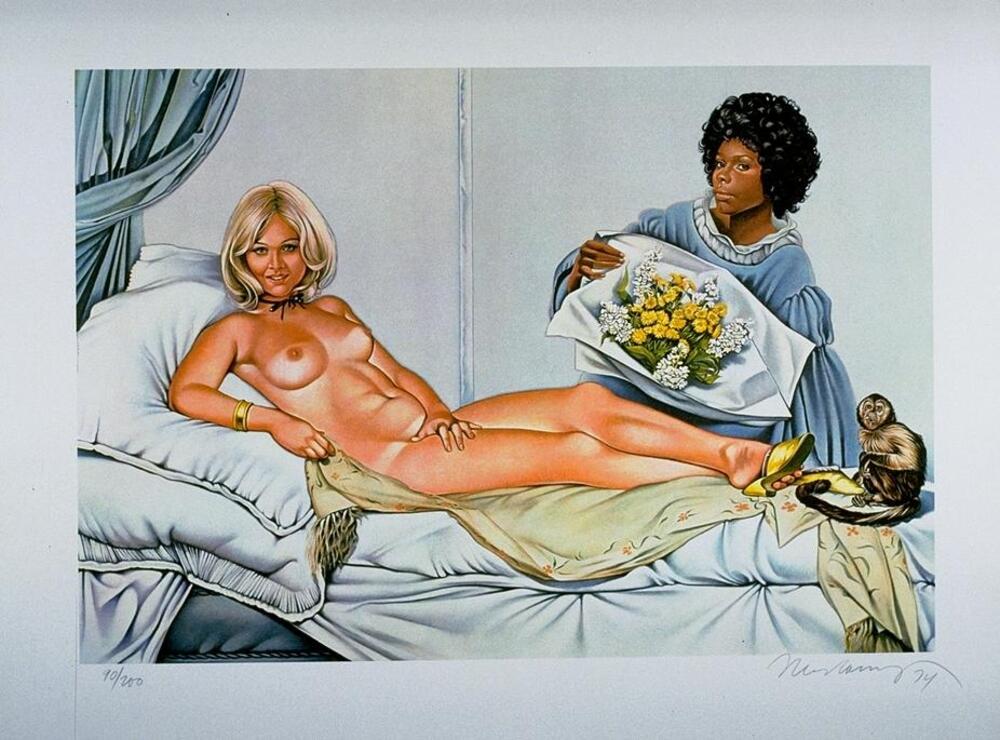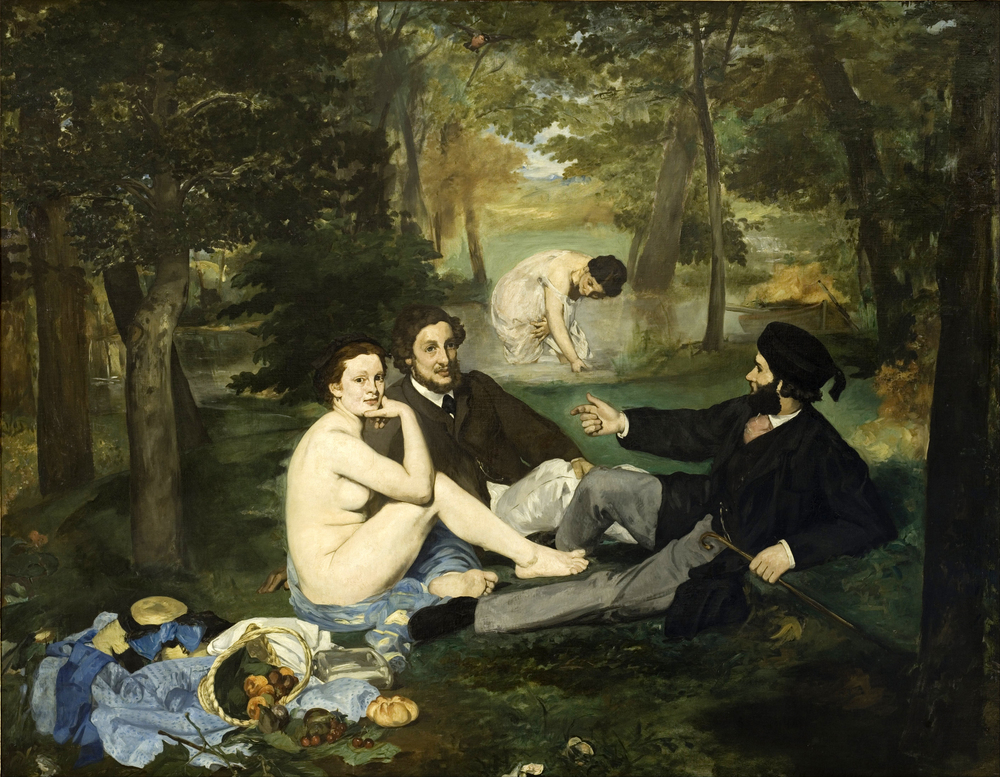Teaching with Carrie Mae Weems' After Manet
A Collection of Resources to Guide Classroom Teaching with After Manet
This photograph by Carrie Mae Weems looks at first glance like a routine formal portrait of three African American girls at rest on a spring day. However, a closer examination reveals its complicated engagement with the legacy of European representational traditions and the toll exacted by these traditions from those it exploits and erases.
Weems' photograph references two 1863 works by French painter Edouard Manet, The Luncheon on the Grass and Olympia, both of which scandalized the art establishment and galvanized a new generation of European painters to explore controversial topics and new aesthetic paradigms. Viewers were riled by Manet's depiction of female nudity without shame and with direct address to the viewers. The power of After Manet comes its retelling of a story about girlhood, middle-class leisure, and cultural heritage, but with protagonists who would have been unimaginable to previous generations of artists.
Much of Weems' work take on the legacy of representation as experienced by women of color. After Manet is only one of Weems' many engagements with the painter's work. See also her series Not Manet's Type.
Created For
K-12 EducatorK-12 Student
Museum Visitor
UMMA Docent
UMMA Staff
University Faculty
University Student
Rate this Resource
AVG: 0 | Ratings: 0
& Author Notes
All Rights ReservedLast Updated
May 25, 2017 8:38 p.m.Report
Reporting Policy




